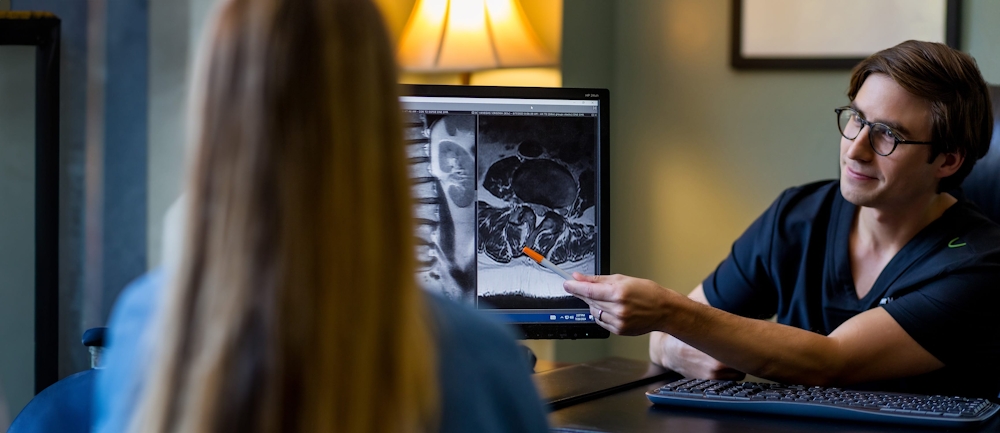At California Neurosurgical Institute, we understand that back and nerve pain can significantly impact your quality of life. Our spine and peripheral nerve surgery services are designed to provide relief for individuals experiencing chronic pain or discomfort. Our expert team employs advanced techniques to ensure you receive the highest level of care.

Artificial Disc Replacement
This surgery replaces a damaged spinal disc with an artificial one to relieve pain and restore normal movement in the spine.

Minimally Invasive Surgical Decompression
This procedure removes pressure from compressed nerves in the spine, which can relieve pain, numbness, and weakness in the back and legs.

Minimally Invasive Spinal Fusion for Instability
This surgery fuses unstable spinal bones together to provide better support and reduce pain.

Corrective Surgery for Spinal Deformity, Scoliosis, and Sagittal Imbalance
This surgery straightens and stabilizes the spine to correct abnormal curvatures and improve posture and function.

Revision Surgery for Failed Fusions
This procedure corrects problems from a previous spinal fusion that didn’t heal properly or didn’t relieve symptoms.

Spinal Cord Stimulators
This surgery implants a device that sends electrical signals to the spinal cord to block pain signals and help manage chronic pain.

Removal of Spinal Tumors
This surgery removes tumors from the spine to relieve pain, prevent further damage, and improve spinal function.

Carpal Tunnel and Ulnar Nerve Release Surgery
These surgeries relieve pressure on nerves in the wrist or elbow to reduce pain, tingling, and numbness in the hands or fingers.

Peripheral Nerve Tumors
This surgery removes tumors from nerves outside of the brain and spinal cord to relieve pain and prevent further nerve damage.
Spine & Peripheral Nerve Surgery FAQ
How do I know if I need spine or peripheral nerve surgery?
Surgery is typically considered when conservative treatments have not achieved relief, and your condition significantly impacts your daily life and function. Talk to your surgeon about what is right for you.
What are the risks associated with these surgeries?
All surgeries carry some risk. Our team takes extensive measures to minimize these risks and ensure a safe procedure.
Will I need physical therapy after surgery?
Physical therapy is often recommended to support recovery, improve strength, and restore mobility.
How long is the recovery period?
Recovery times vary depending on the specific surgery and individual health, but many patients begin to notice improvements within a few weeks, with full recovery potentially taking several months.
Are these surgeries performed on an outpatient basis?
Some minimally invasive procedures can be outpatient, while more complex surgeries may require an inpatient stay.







